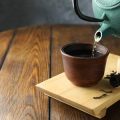Introduction: Reimagining the French Press for Tea Lovers
The French press, or cafetière as it’s fondly known across Britain, has long been a beloved tool among coffee aficionados. Yet, a quiet revolution is underway in British kitchens—one that sees this classic device making its way into the world of tea brewing. For generations, British tea culture has been synonymous with teapots, fine china, and a meticulously observed brewing ritual. However, as more tea enthusiasts seek both simplicity and quality in their daily cuppas, the French press is gaining newfound popularity. Its straightforward mechanism and ability to produce a nuanced infusion appeal to those looking for a convenient yet refined approach to their favourite beverage. In this guide, we’ll explore how the French press is being creatively repurposed by British tea drinkers eager to elevate their brewing experience without sacrificing tradition or taste.
2. Choosing the Right French Press for Tea Brewing
For British tea enthusiasts keen to experiment with the French press, selecting the right equipment is a pivotal step. While the French press is traditionally associated with coffee, its simple yet effective mechanism makes it a versatile tool for steeping loose-leaf tea. This section explores suitable materials, sizes, and designs that align with time-honoured British tea traditions, helping you make an informed choice.
Materials: Balancing Flavour and Tradition
The material of your French press can influence both flavour and experience. Glass presses are popular for their neutrality, allowing the true character of black or green teas to shine through without imparting additional flavours. Stainless steel versions offer excellent heat retention—ideal for longer steeping sessions—but may slightly alter delicate teas. Ceramic presses evoke a traditional feel reminiscent of classic teapots, making them a charming choice for those who value ritual. The table below outlines key differences:
| Material | Main Benefits | Potential Drawbacks | Best For |
|---|---|---|---|
| Glass | Neutral taste, visual appeal | Fragile, moderate heat retention | Everyday tea drinking, observing infusion colour |
| Stainless Steel | Durable, superior heat retention | May affect subtle flavours, opaque | Strong black teas, communal brewing |
| Ceramic | Aesthetic, good heat retention | Heavier, breakable | Traditional afternoon tea settings |
Choosing the Right Size for Your Tea Moments
The size of your French press should reflect how you usually enjoy your tea. A one-litre (about 34oz) press suits family gatherings or when hosting guests for afternoon tea—a cherished British custom. Smaller presses (350ml–500ml) are perfect for solo enjoyment or tasting sessions featuring premium single-origin leaves. Remember that overfilling can lead to uneven extraction, so match the volume to your typical serving size.
Recommended Sizes for Common Occasions:
| Occasion | Suggested Size |
|---|---|
| Solo Cuppa or Tasting Flight | 350ml–500ml (1–2 cups) |
| Afternoon Tea with Family/Friends | 1L (3–4 cups) |
| Larger Gatherings or Events | 1.5L+ (6+ cups) |
Design Features That Complement British Rituals
Beyond basic function, consider design elements that enhance both usability and tradition. A sturdy handle and easy-to-pour spout echo the elegance of classic teapots. Look for fine-mesh filters to keep even small leaf fragments out of your cup—a must for clear brews enjoyed during formal occasions. Some modern presses offer double-walled construction to maintain temperature throughout leisurely afternoon teas.
A Note on Cleaning and Maintenance
A press that disassembles easily will save you time—especially important if you alternate between different types of tea or share your kitchenware with coffee drinkers.
Selecting a French press tailored to your needs will not only complement but also elevate your tea rituals, blending British tradition with practical innovation.

3. Selecting Quality Teas: British Standards and Beyond
When it comes to brewing tea in a French press, the quality and type of loose leaf tea you choose can make all the difference. Traditional British favourites such as English Breakfast and Earl Grey are excellent starting points for those looking to embrace the French press method without straying too far from familiar comforts. These blends, with their robust flavours and distinctive aromas, hold up well during the longer steeping times that French press brewing encourages.
Choosing Loose Leaf Tea Varieties
For optimal results, always opt for loose leaf teas over pre-packed tea bags. Loose leaves allow hot water to circulate more freely, unlocking a richer flavour profile—something particularly noticeable when using a French press. Look for whole leaf or large broken leaf grades, as these will expand fully and infuse more evenly.
English Breakfast
This classic blend is beloved across Britain for its malty depth and hearty character. When brewed in a French press, English Breakfast delivers a full-bodied cup that stands up beautifully to milk and sugar, if you so wish.
Earl Grey
The distinct notes of bergamot in Earl Grey provide a fragrant and slightly citrusy twist. The French press accentuates these aromatics, offering a more pronounced floral bouquet compared to conventional brewing methods.
Herbal Infusions
If youre keen to explore beyond black teas, consider herbal options like peppermint, chamomile, or rooibos. Herbal infusions tend to fare exceptionally well in a French press, as the gentle pressure ensures maximum extraction of essential oils and subtle nuances.
Going Beyond Tradition
While quintessentially British blends are a safe bet, don’t shy away from experimenting with single-origin teas or modern blends featuring botanicals and spices. The versatility of the French press allows for both classic and innovative choices—perfect for the adventurous tea drinker looking to expand their palate while retaining a nod to time-honoured British standards.
4. Step-by-Step Brewing Technique: From Kettle to Cup
Brewing loose-leaf tea in a French press is both straightforward and rewarding, especially when you tailor the process for classic British teas. Below is a detailed walkthrough, ensuring every step honours the ritual of British tea-making while making the most of your French press.
Choosing Your Tea and Preparing Equipment
Select a high-quality loose-leaf black tea such as Assam, Darjeeling, or an English Breakfast blend. Ensure your French press is thoroughly cleaned to avoid any residual flavours from previous brews (especially if it’s been used for coffee). Pre-warm your French press with hot water for a minute; this helps maintain optimal brewing temperature.
Optimal Water Temperature and Measurements
For British-style teas, water just off the boil (around 95°C) is ideal. Avoid reboiling water multiple times, as it can flatten the flavour profile. The standard ratio is about 1 teaspoon (2–3g) of loose-leaf tea per 200ml of water.
| Tea Type | Water Temp | Steeping Time | Leaf-to-Water Ratio |
|---|---|---|---|
| Assam/English Breakfast | 95°C | 3-5 mins | 1 tsp / 200ml |
| Earl Grey | 90-95°C | 3-4 mins | 1 tsp / 200ml |
| Darjeeling (First Flush) | 85-90°C | 2-3 mins | 1 tsp / 200ml |
The Brewing Process: A British Take on the French Press Method
- Add Loose Leaf: Place measured tea leaves into the pre-warmed French press.
- Add Hot Water: Pour freshly boiled water over the leaves, ensuring even saturation.
- Steep: Place the plunger lid on top but do not plunge yet. Allow to steep according to the table above, adjusting for personal taste—longer for more robustness, shorter for delicacy.
- Plunge Gently: Once steeped, slowly depress the plunger to separate leaves from liquid. Do not rush this step; a gentle hand preserves clarity and avoids bitterness.
- Serve Immediately: Pour into your favourite mug or teacup. If preferred, add milk first (“MIF” for traditionalists) or after pouring (“Milk Last” camp).
Troubleshooting & Practical Tips for British Tea Drinkers
- If your brew tastes too strong or bitter, reduce steeping time or use slightly cooler water.
- Avoid letting tea sit on the leaves post-steep—decant fully if you plan to linger over multiple cups.
- If you enjoy a proper builder’s brew, increase leaf quantity or extend steeping by 30 seconds.
- The French press method offers flexibility: experiment with blends and infusions like Earl Grey with a slice of lemon or Yorkshire tea with oat milk.
Savouring Tradition with Modern Convenience
The French press brings together British reverence for tea with contemporary convenience. By following these steps and adjusting to taste, you’ll enjoy consistently delicious cups—worthy of any afternoon break or teatime gathering.
5. Cleaning and Maintaining Your French Press
For British tea enthusiasts keen to explore the French press, proper care is absolutely essential—not just for longevity, but also to avoid that notorious flavour crossover between brews. Here’s how to keep your French press in top nick, ensuring each cuppa is as delightful as intended.
Rinse Immediately After Use
As soon as you’ve poured out your last cup, give the press a good rinse with warm water. This prevents tannins from both tea and coffee from settling in and affecting subsequent brews. It’s a simple habit that goes a long way.
Disassemble for a Thorough Clean
Every so often—ideally after every few uses—take apart the plunger, filter, and any other removable parts. Wash each component with mild washing-up liquid and a soft sponge. Avoid anything too abrasive, as this could scratch the glass or metal, making it prone to staining or odour retention.
Mind the Filter Mesh
The mesh filter can trap fine tea leaves or coffee grounds. Gently scrub it with a soft brush (an old toothbrush works wonders), making sure no residue remains stuck. Rinse thoroughly to ensure there’s no soapy aftertaste left behind.
Avoid Strong Smells
If you’re alternating between brewing tea and coffee, consider dedicating one French press to each beverage or using baking soda for an occasional deep clean. Just sprinkle some baking soda inside, add warm water, let it sit for 15 minutes, then rinse well. This neutralises lingering aromas and tastes.
Drying and Storage
Once clean, leave all parts to air dry completely before reassembling and storing your French press. Trapped moisture can lead to musty smells or even mould growth—definitely not what you want mingling with your Earl Grey or Assam!
Regular Maintenance Tips
Avoid dishwasher cleaning unless the manufacturer specifically says it’s safe. Over time, dishwashers can damage seals and finishes, shortening the life of your French press. By treating your kit with respect, you’ll enjoy pristine brews and a piece of kit that stands the test of time—a hallmark of proper British tea culture.
6. Beyond Black Tea: Experimenting with Infusions and Blends
The French press is not merely a tool for brewing your classic English Breakfast or Earl Grey; it’s also a gateway to a world of creative infusions and blends that are sure to intrigue even the most traditional British tea drinker. For those open to a bit of culinary adventure, this versatile device can help you discover new flavours well beyond the familiar.
Herbal Infusions for Every Mood
Herbal teas, or tisanes, are wonderfully suited to the French press. Simply add your favourite dried herbs—such as chamomile, peppermint, or lemon verbena—to the carafe, pour over hot water, and steep for five minutes. The plunger’s fine mesh keeps loose leaves and bits at bay, ensuring a clear cup. Try blending herbs like rosemary and lavender for a floral twist that’s perfect for winding down after a busy day.
Fruit Blends: A Modern British Twist
If you fancy something vibrant, experiment with fruit infusions. Slices of fresh apple, orange peel, or berries can be combined with black or green tea leaves in your French press. Add a touch of cinnamon or ginger for an aromatic boost. These blends work equally well served hot or cold, making them ideal for summer garden parties or cosy winter evenings alike.
A Playful Approach to Flavour
Don’t hesitate to get creative with ingredients already in your pantry. A handful of mint leaves with a wedge of lemon offers a refreshing pick-me-up. For something more indulgent, try cocoa nibs paired with Assam tea for a chocolatey depth that’s both subtle and satisfying. The French press gives you full control over steeping time and strength, so you can fine-tune each blend to your taste.
Tips for Adventurous Brewing
Always start with small batches until you find your preferred ratios. If using fresh ingredients like fruit or ginger, give them a gentle muddle before adding hot water to release their natural oils. And don’t forget to clean your French press thoroughly between different blends—nobody wants lingering flavours from last week’s experiment!
In summary, the French press invites British tea enthusiasts to push beyond tradition and embrace experimentation. Whether you’re seeking comfort in familiar herbs or excitement in novel flavour combinations, this humble device offers endless opportunities to personalise your daily cuppa.


